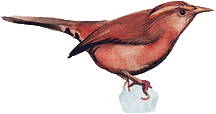
|
|
Research
Cognitive psychologist Abigail Housen’s
original research on aesthetic development began
with the intrigue that some people know nothing
about art while others are experts. Once naïve
viewers, the experts must have undergone many
changes as their capacities developed. After many
years of research, Housen published a study on
aesthetic development in 1979 and in 1983 submitted
her doctoral thesis on analyzing aesthetic thought,
to the Harvard School of Education. From the time
that Philip Yenawine was appointed Director of
Education at The Museum of Modern Art in New York
in 1983, he began to conduct research that could
inform the Museum about its audiences. Yenawine
was introduced to Abigail Housen in 1988 and they
began to work together to assess MoMA's Education
Department programs focusing on programs for teachers
and students. One initial finding confirmed what
was suspected: almost all teachers in the study
were beginning viewers. However, one experiment
showed that if properly prepared, classroom teachers
could have a significant impact on the viewing
abilities of their students. Housen and Yenawine
began to consider ways in which their findings
could be incorporated into a sequential curriculum
that would enable general classroom teachers to
introduce the discussion of works of art to their
students. In January 1994, the Visual Thinking
Strategies (VTS) was tested for the first time
in classrooms outside of the United States. Experimentation
in St. Petersburg, Russia, recognized that the
VTS could help reform educational practices in
the former Soviet Union. This student-centered
approach to education has now been implemented
in Kazakstan, Estonia, Macedonia, Lithuania, Kyrgyzstan,
and Ukraine. In January 1995, Housen and
Yenawine formed Visual Understanding in Education
(VUE), a not-for-profit organization, to further
developmentally based education research. The
K-6 VTS method is currently being implemented
in specific U.S. sites including San Antonio.
• In March 2001, a study entitled “Methods
for Assessing Transfer from an Art-Viewing Program”
was published by Dr. Abigail Housen. The paper
summarized a research project conducted by Philip
Yenawine and Dr. Housen in Byron, Minnesota in
the years 1993-1998. The project set out to prove
art viewing as a means to other types of academic
development. The conclusions ultimately suggest
an important role that art viewing can play in
education. The VTS method proves to transfer to
other academic disciplines of reading, writing,
science, and math. During the first three-years of the San Antonio
VTS program, Abigail Housen conducted on-site
research to prove that experimental students trained
in the VTS would display more critical thinking
skills (making observations and generating speculations)
than control students. In effect, critical thinking
skills would transfer to other domains. Her strategies
included:
- Looking for evidence of enhanced critical thinking
in Aesthetic Development Interviews;
- Looking for evidence of transfer of VTS-learned
skills to non-art objects such as foreign coins,
calipers, and anemometers in Material Object interviews;
and
- Looking for evidence of transfer of VTS-learned
skills in writing assignments
The study concluded that within the SAISD, the
use of the VTS method facilitated an increase
in students’ development of aesthetic thinking
and demonstration of VTS learned skills of observation,
supported observations, and speculation.
|
